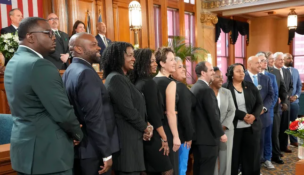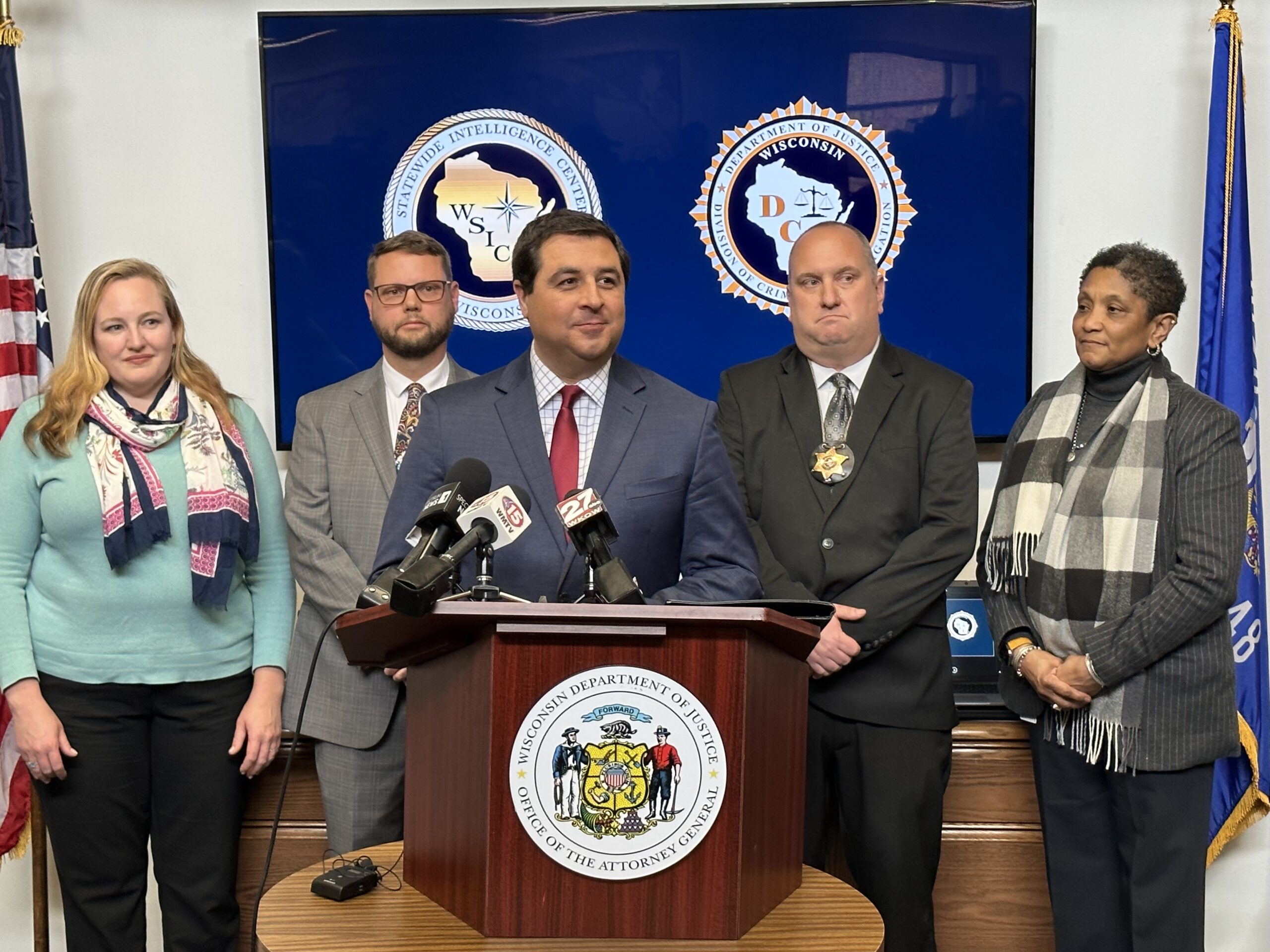What it takes to make partner
By: Jane Pribek//June 18, 2013//
Firm leaders reflect on what’s changed and what remains critical
 With the economy still recovering and a challenging job market for new law graduates, some have likened making partner at a medium or large law firm to winning the lottery.
With the economy still recovering and a challenging job market for new law graduates, some have likened making partner at a medium or large law firm to winning the lottery.
But Wisconsin firm leaders said, though it may take longer to make partner these days, the basics of how to do so remain the same.
For example, large law firms in Wisconsin generally still look for future partners at the clerkship level, even as firms elsewhere have scrapped the practice. Tom Nichols of Milwaukee’s Meissner Tierney Fisher & Nichols SC said he’s partial to that model because, “There’s a certain advantage to having people who are sort of ‘born and raised’ in the law with our firm.”
Likewise, Milwaukee-based Whyte Hirschboeck Dudek SC has “an active summer associate program,” said shareholder Lynda Templin, the firm’s vice president of legal services. The firm typically hires four or five 2Ls every year, she said, and offers them “the real law-firm experience.”
“Their day is very much like an associate’s day,” Templin said.
Summer associates are evaluated after 12 weeks and the firm extends post-graduation associate offers to most of them, Templin said, because they were vetted closely before they were offered the clerkship.
In fact, many Wisconsin firms hire associates with the expectation that one day they will be full partners.
“It takes a lot of effort and time, and it’s quite an investment, economic and otherwise, to train a lawyer,” said Bradley Raaths, managing partner of Madison-based DeWitt Ross & Stevens SC. “The last thing we want to do is make that investment in someone, to our competitors’ benefit.”
Templin agreed.
“When an associate first comes though the door, we are in alliance with them to help them succeed,” she said. “We hope they will want to stay with us, and we give them the tools to succeed.”
Among those tools is mentoring.
WHD associates are paired with more senior lawyers, within their substantive area or outside it, Templin said, and they all work closely with their practice group chairmen.
At DeWitt Ross, a 90-lawyer firm, mentors are assigned to each new hire. But the firm also anticipates that new associates will find their own, informal mentors, by interacting with a wide variety of attorneys, Raaths said.
At the 18-lawyer firm of Meissner Tierney it’s more of a “free-for-all,” Nichols said, where all the firm leaders try to work with the associates in different ways.
Whatever the process, the most important thing, Raaths said, is for young lawyers to develop a first-rate practice.
“If you’re not a top-notch lawyer, the rest of it is somewhat moot,” he said. “So first and foremost, to make partner, be a superb lawyer.”
It’s important to be a team player, as well, Templin said.
“You don’t have to have a major book of business to become a shareholder,” she said. “But you do have to have a demonstrated ability to develop work over time. And, you’ve also met the expectations regarding the quantity and quality of billable hours.”
What has changed
Though the foundation of making partner remains the same, it generally takes longer now to build it.
Nichols said he made partner after just five years’ practicing in the 1980s. That was typical for the times, he said, where a four- to six-year consideration window was the norm.
But these days at his firm, the process typically takes longer, he said, although there’s no set number of years where partnership is automatically a consideration.
At WHD, the expected first year for partnership consideration typically is at the end of the eighth year, though that is not a rigid number.
And like many large firms nationwide, DeWitt Ross has added an intermediate level of nonequity partnership, which extends the timeframe for achieving full partnership. Partnership typically is offered anywhere from one to three years after being named a “contract partner.”
Firm leaders added the nonequity option, Raaths said, after realizing that going from associate to full partner was a big step, and that a more gradual step would be better for both sides.
“It’s a stepping stone rather than a destination,” he said of the nonequity option.
One thing that’s improved in the path to making partner is firms’ communication on how to do so, Nichols said.
When he was a new lawyer, Nichols said, no one sat him down and had the conversation about what the firm was looking for. He just figured it out, as did many lawyers of his generation.
These days, however, most firms are better at conveying the expectations, he said. At Meissner Tierney, Nichols tells all new associates that the firm wants lawyers who are independently driven to practice good law; who have a natural inclination and ability to work with others; and who can keep the clients they’ve got very satisfied, while over time starting to generate some of their own business.
Performance evaluations are a critical component of that. They are conducted annually at DeWitt Ross, mostly with a focus on development in the substantive area of the law, in addition to quarterly meetings to assess professional development.
WHD also conducts thorough annual evaluations, involving numerous individuals — mentors, practice chairs, human resources staff, etc. — who offer “benchmarks” for future progress, Templin said.
The evaluations are semi-annual at Meissner Tierney, Nichols said, with the first usually taking place about three months after starting. But also, there’s a great deal of informal feedback along the way.
No one has said to Nichols, “Gee, I never saw this coming,” when partnership isn’t extended, he said. That’s because partnership has been continually discussed. He makes it a point to frequently ask, he said, whether the firm is being clear with its expectations and whether it somehow seems any different from what candidates were told when being recruited.
The answer universally has been that it’s “exactly as advertised” — so when people have left, he’s remained on good terms with them. Clear expectations help both sides, he said, understand how realistic making partner may be.
Legal News
- Wisconsin Supreme Court justices question how much power Legislature should have
- Milwaukee’s Common Council now has the most African Americans, women and openly LGBTQ members ever
- Office of School Safety Provides Behavioral and Threat Assessment Management Training Ahead of 25th Anniversary of Columbine Shooting
- Wisconsin Supreme Court to hear arguments in Democratic governor’s suit against GOP-led Legislature
- Lawsuit asks Wisconsin Supreme Court to strike down governor’s 400-year veto
- Wisconsin man pleads not guilty to neglect in disappearance of boy
- ACS Selects University of Wisconsin Law School’s Miriam Seifter for 2024 Ruth Bader Ginsburg Scholar Award
- People with disabilities sue in Wisconsin over lack of electronic absentee ballots
- Wisconsin Republicans ignore governor’s call to spend $125M to combat ‘forever chemicals’
- Native American voices are finally factoring into energy projects
- Steven Avery prosecutor Ken Kratz admits ‘mistakes were made’
- Colombian national extradited to Milwaukee faces International narcotics-trafficking conspiracy charge
WLJ People
- Power 30 Personal Injury Attorneys – Russell Nicolet
- Power 30 Personal Injury Attorneys – Benjamin Nicolet
- Power 30 Personal Injury Attorneys – Dustin T. Woehl
- Power 30 Personal Injury Attorneys – Katherine Metzger
- Power 30 Personal Injury Attorneys – Joseph Ryan
- Power 30 Personal Injury Attorneys – James M. Ryan
- Power 30 Personal Injury Attorneys – Dana Wachs
- Power 30 Personal Injury Attorneys – Mark L. Thomsen
- Power 30 Personal Injury Attorneys – Matthew Lein
- Power 30 Personal Injury Attorneys – Jeffrey A. Pitman
- Power 30 Personal Injury Attorneys – William Pemberton
- Power 30 Personal Injury Attorneys – Howard S. Sicula











